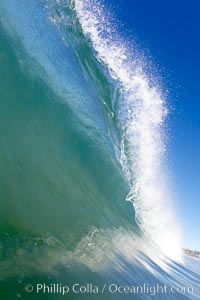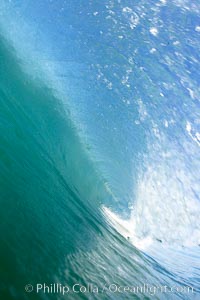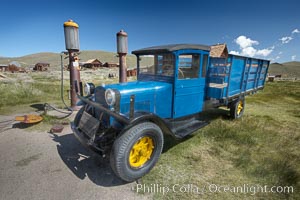
Old truck and gas station, in front of Boone Store and Warehouse, Main Street and Green Street.
Location: Bodie State Historical Park, California
Image ID: 23108
Location: Bodie State Historical Park, California
Image ID: 23108
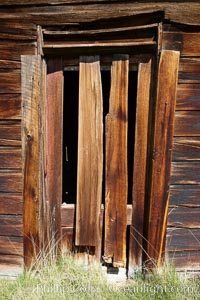
Weathered and broken old door, Kelley Building on Green Street.
Location: Bodie State Historical Park, California
Image ID: 23109
Location: Bodie State Historical Park, California
Image ID: 23109
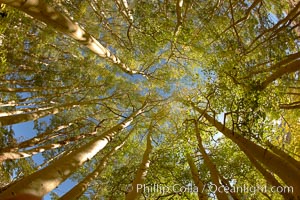
A grove of aspen trees, looking up to the sky along the towering white trunks to the yellow and green leaves, changing color in autumn.
Species: Aspen, Populus tremuloides
Location: Bishop Creek Canyon, Sierra Nevada Mountains, California
Image ID: 23376
Species: Aspen, Populus tremuloides
Location: Bishop Creek Canyon, Sierra Nevada Mountains, California
Image ID: 23376
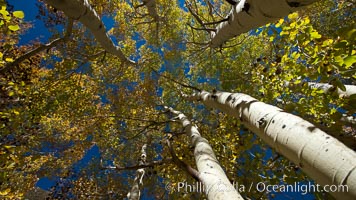
Aspen trees, with leaves changing from green to yellow in autumn, branches stretching skyward, a forest.
Species: Aspen, Populus tremuloides
Location: Bishop Creek Canyon Sierra Nevada Mountains, California
Image ID: 26085
Species: Aspen, Populus tremuloides
Location: Bishop Creek Canyon Sierra Nevada Mountains, California
Image ID: 26085
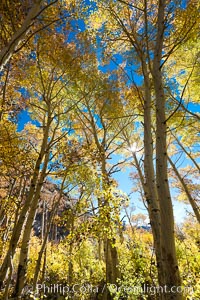
Aspen trees, with leaves changing from green to yellow in autumn, branches stretching skyward, a forest.
Species: Aspen, Populus tremuloides
Location: Bishop Creek Canyon Sierra Nevada Mountains, California
Image ID: 26087
Species: Aspen, Populus tremuloides
Location: Bishop Creek Canyon Sierra Nevada Mountains, California
Image ID: 26087
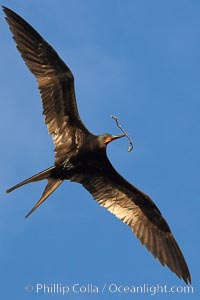
Great frigatebird, adult male, in flight, carrying twig for nest building, green iridescence of scapular feathers identifying species. Wolf Island.
Species: Great frigatebird, Fregata minor
Location: Wolf Island, Galapagos Islands, Ecuador
Image ID: 16708
Species: Great frigatebird, Fregata minor
Location: Wolf Island, Galapagos Islands, Ecuador
Image ID: 16708
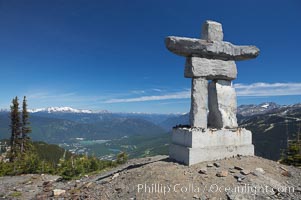
Ilanaaq, the logo of the 2010 Winter Olympics in Vancouver, is formed of stone in the Inukshuk-style of traditional Inuit sculpture. Located near the Whistler mountain gondola station, overlooking Whistler Village and Green Lake in the distance.
Location: Whistler, British Columbia, Canada
Image ID: 21007
Location: Whistler, British Columbia, Canada
Image ID: 21007
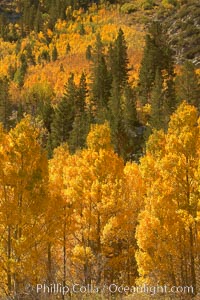
Yellow aspen trees in fall, line the sides of Bishop Creek Canyon, mixed with green pine trees, eastern sierra fall colors.
Species: Aspen, Populus tremuloides
Location: Bishop Creek Canyon, Sierra Nevada Mountains, California
Image ID: 23347
Species: Aspen, Populus tremuloides
Location: Bishop Creek Canyon, Sierra Nevada Mountains, California
Image ID: 23347
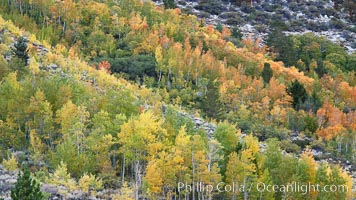
Aspen trees, create a collage of autumn colors on the sides of Rock Creek Canyon, fall colors of yellow, orange, green and red.
Species: Aspen, Populus tremuloides
Location: Rock Creek Canyon, Sierra Nevada Mountains, California
Image ID: 23348
Species: Aspen, Populus tremuloides
Location: Rock Creek Canyon, Sierra Nevada Mountains, California
Image ID: 23348
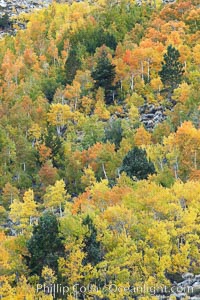
Aspen trees, create a collage of autumn colors on the sides of Rock Creek Canyon, fall colors of yellow, orange, green and red.
Species: Aspen, Populus tremuloides
Location: Rock Creek Canyon, Sierra Nevada Mountains, California
Image ID: 23349
Species: Aspen, Populus tremuloides
Location: Rock Creek Canyon, Sierra Nevada Mountains, California
Image ID: 23349
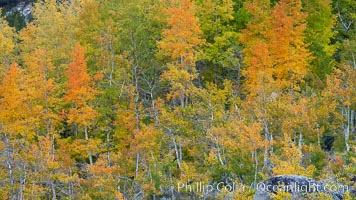
Aspen trees, create a collage of autumn colors on the sides of Rock Creek Canyon, fall colors of yellow, orange, green and red.
Species: Aspen, Populus tremuloides
Location: Rock Creek Canyon, Sierra Nevada Mountains, California
Image ID: 23354
Species: Aspen, Populus tremuloides
Location: Rock Creek Canyon, Sierra Nevada Mountains, California
Image ID: 23354
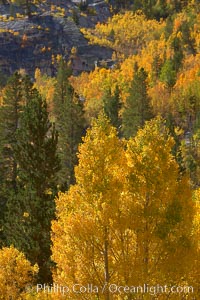
Yellow aspen trees in fall, line the sides of Bishop Creek Canyon, mixed with green pine trees, eastern sierra fall colors.
Species: Aspen, Populus tremuloides
Location: Bishop Creek Canyon, Sierra Nevada Mountains, California
Image ID: 23358
Species: Aspen, Populus tremuloides
Location: Bishop Creek Canyon, Sierra Nevada Mountains, California
Image ID: 23358
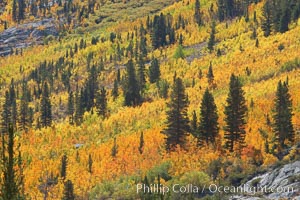
Yellow aspen trees in fall, line the sides of Bishop Creek Canyon, mixed with green pine trees, eastern sierra fall colors.
Species: Aspen, Populus tremuloides
Location: Bishop Creek Canyon, Sierra Nevada Mountains, California
Image ID: 23359
Species: Aspen, Populus tremuloides
Location: Bishop Creek Canyon, Sierra Nevada Mountains, California
Image ID: 23359
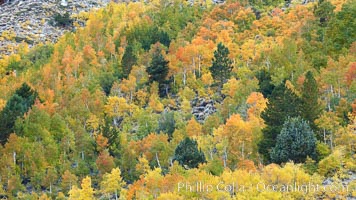
Aspen trees, create a collage of autumn colors on the sides of Rock Creek Canyon, fall colors of yellow, orange, green and red.
Species: Aspen, Populus tremuloides
Location: Rock Creek Canyon, Sierra Nevada Mountains, California
Image ID: 23364
Species: Aspen, Populus tremuloides
Location: Rock Creek Canyon, Sierra Nevada Mountains, California
Image ID: 23364
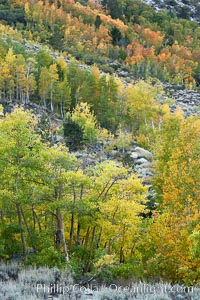
Aspen trees, create a collage of autumn colors on the sides of Rock Creek Canyon, fall colors of yellow, orange, green and red.
Species: Aspen, Populus tremuloides
Location: Rock Creek Canyon, Sierra Nevada Mountains, California
Image ID: 23370
Species: Aspen, Populus tremuloides
Location: Rock Creek Canyon, Sierra Nevada Mountains, California
Image ID: 23370
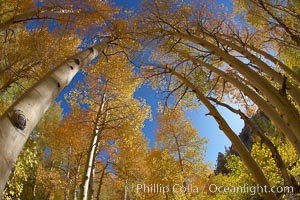
A grove of aspen trees, looking up to the sky along the towering white trunks to the yellow and green leaves, changing color in autumn.
Species: Aspen, Populus tremuloides
Location: Bishop Creek Canyon, Sierra Nevada Mountains, California
Image ID: 23374
Species: Aspen, Populus tremuloides
Location: Bishop Creek Canyon, Sierra Nevada Mountains, California
Image ID: 23374
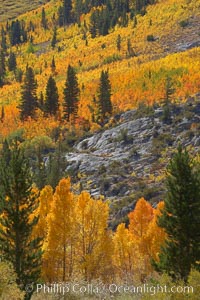
Yellow aspen trees in fall, line the sides of Bishop Creek Canyon, mixed with green pine trees, eastern sierra fall colors.
Species: Aspen, Populus tremuloides
Location: Bishop Creek Canyon, Sierra Nevada Mountains, California
Image ID: 23377
Species: Aspen, Populus tremuloides
Location: Bishop Creek Canyon, Sierra Nevada Mountains, California
Image ID: 23377
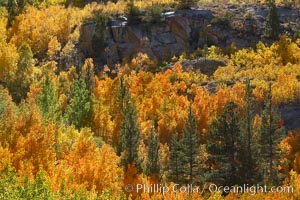
Yellow aspen trees in fall, line the sides of Bishop Creek Canyon, mixed with green pine trees, eastern sierra fall colors.
Species: Aspen, Populus tremuloides
Location: Bishop Creek Canyon, Sierra Nevada Mountains, California
Image ID: 23389
Species: Aspen, Populus tremuloides
Location: Bishop Creek Canyon, Sierra Nevada Mountains, California
Image ID: 23389
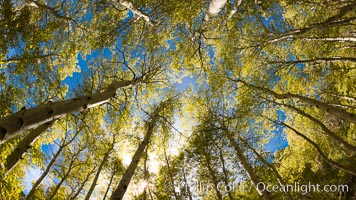
Aspen trees, with leaves changing from green to yellow in autumn, branches stretching skyward, a forest.
Species: Aspen, Populus tremuloides
Location: Bishop Creek Canyon Sierra Nevada Mountains, California
Image ID: 26072
Species: Aspen, Populus tremuloides
Location: Bishop Creek Canyon Sierra Nevada Mountains, California
Image ID: 26072
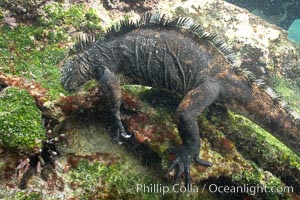
Marine iguana, underwater, forages for green algae that grows on the lava reef.
Species: Marine iguana, Amblyrhynchus cristatus
Location: Bartolome Island, Galapagos Islands, Ecuador
Image ID: 16228
Species: Marine iguana, Amblyrhynchus cristatus
Location: Bartolome Island, Galapagos Islands, Ecuador
Image ID: 16228
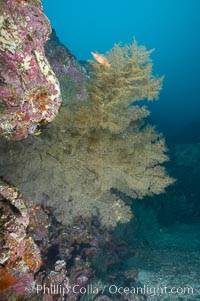
Black coral. The fan is five feet in diameter and the color of the live coral is more yellow-green than black.
Species: Black coral, Antipathidae
Location: North Seymour Island, Galapagos Islands, Ecuador
Image ID: 16443
Species: Black coral, Antipathidae
Location: North Seymour Island, Galapagos Islands, Ecuador
Image ID: 16443
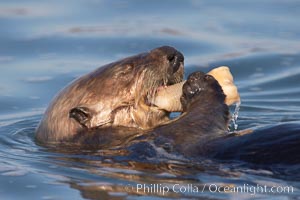
A sea otter eats a clam that it has taken from the shallow sandy bottom of Elkhorn Slough. Because sea otters have such a high metabolic rate, they eat up to 30% of their body weight each day in the form of clams, mussels, urchins, crabs and abalone. Sea otters are the only known tool-using marine mammal, using a stone or old shell to open the shells of their prey as they float on their backs.
Species: Sea otter, Enhydra lutris
Location: Elkhorn Slough National Estuarine Research Reserve, Moss Landing, California
Image ID: 21652
Species: Sea otter, Enhydra lutris
Location: Elkhorn Slough National Estuarine Research Reserve, Moss Landing, California
Image ID: 21652
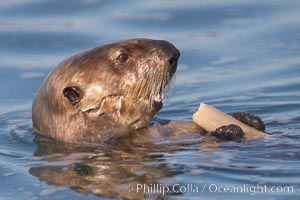
A sea otter eats a clam that it has taken from the shallow sandy bottom of Elkhorn Slough. Because sea otters have such a high metabolic rate, they eat up to 30% of their body weight each day in the form of clams, mussels, urchins, crabs and abalone. Sea otters are the only known tool-using marine mammal, using a stone or old shell to open the shells of their prey as they float on their backs.
Species: Sea otter, Enhydra lutris
Location: Elkhorn Slough National Estuarine Research Reserve, Moss Landing, California
Image ID: 21660
Species: Sea otter, Enhydra lutris
Location: Elkhorn Slough National Estuarine Research Reserve, Moss Landing, California
Image ID: 21660
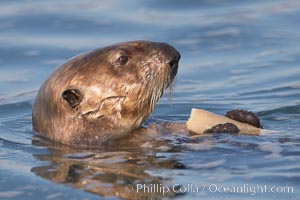
A sea otter eats a clam that it has taken from the shallow sandy bottom of Elkhorn Slough. Because sea otters have such a high metabolic rate, they eat up to 30% of their body weight each day in the form of clams, mussels, urchins, crabs and abalone. Sea otters are the only known tool-using marine mammal, using a stone or old shell to open the shells of their prey as they float on their backs.
Species: Sea otter, Enhydra lutris
Location: Elkhorn Slough National Estuarine Research Reserve, Moss Landing, California
Image ID: 21661
Species: Sea otter, Enhydra lutris
Location: Elkhorn Slough National Estuarine Research Reserve, Moss Landing, California
Image ID: 21661
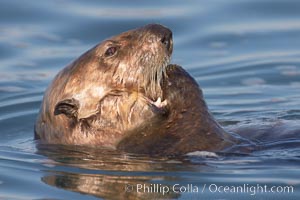
A sea otter eats a clam that it has taken from the shallow sandy bottom of Elkhorn Slough. Because sea otters have such a high metabolic rate, they eat up to 30% of their body weight each day in the form of clams, mussels, urchins, crabs and abalone. Sea otters are the only known tool-using marine mammal, using a stone or old shell to open the shells of their prey as they float on their backs.
Species: Sea otter, Enhydra lutris
Location: Elkhorn Slough National Estuarine Research Reserve, Moss Landing, California
Image ID: 21662
Species: Sea otter, Enhydra lutris
Location: Elkhorn Slough National Estuarine Research Reserve, Moss Landing, California
Image ID: 21662
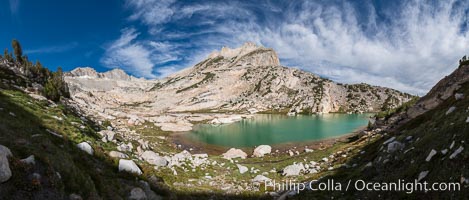
North Peak (12242', center), Mount Conness (left, 12589') and Conness Lake with its green glacial meltwater, Hoover Wilderness.
Location: Conness Lakes Basin, Hoover Wilderness, California
Image ID: 31061
Panorama dimensions: 6498 x 15248
Location: Conness Lakes Basin, Hoover Wilderness, California
Image ID: 31061
Panorama dimensions: 6498 x 15248
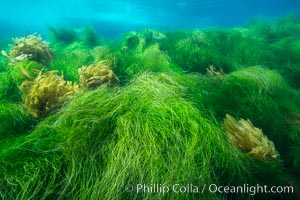
Southern sea palm (yellow) and surf grass (green), shallow water, San Clemente Island.
Species: Southern palm kelp, Surfgrass, Eisenia arborea, Phyllospadix
Location: San Clemente Island, California
Image ID: 30885
Species: Southern palm kelp, Surfgrass, Eisenia arborea, Phyllospadix
Location: San Clemente Island, California
Image ID: 30885
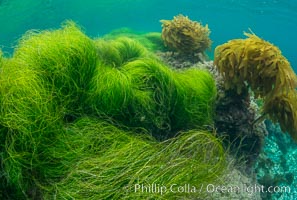
Southern sea palm (yellow) and surf grass (green), shallow water, San Clemente Island.
Species: Southern palm kelp, Surfgrass, Eisenia arborea, Phyllospadix
Location: San Clemente Island, California
Image ID: 30944
Species: Southern palm kelp, Surfgrass, Eisenia arborea, Phyllospadix
Location: San Clemente Island, California
Image ID: 30944
